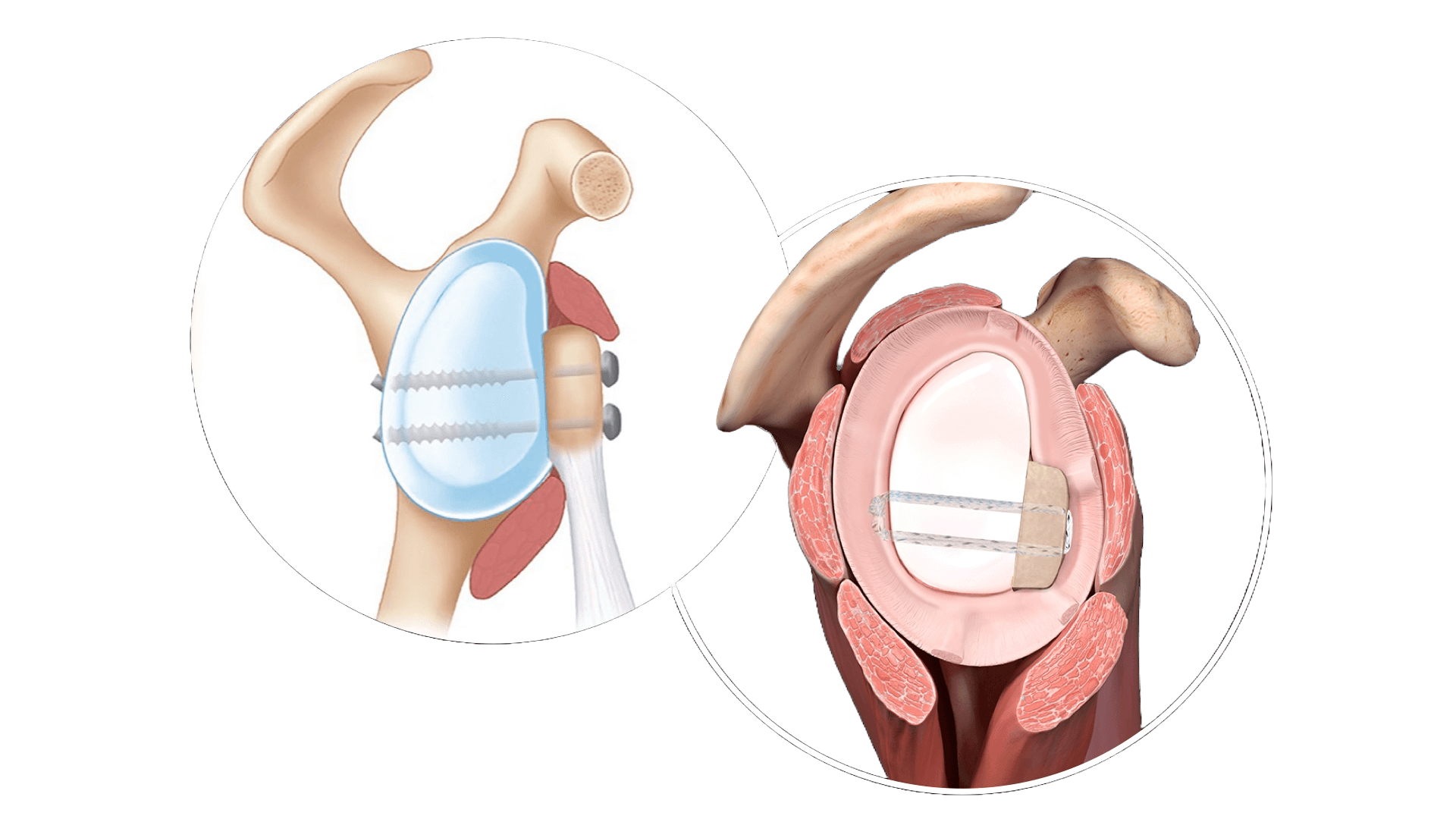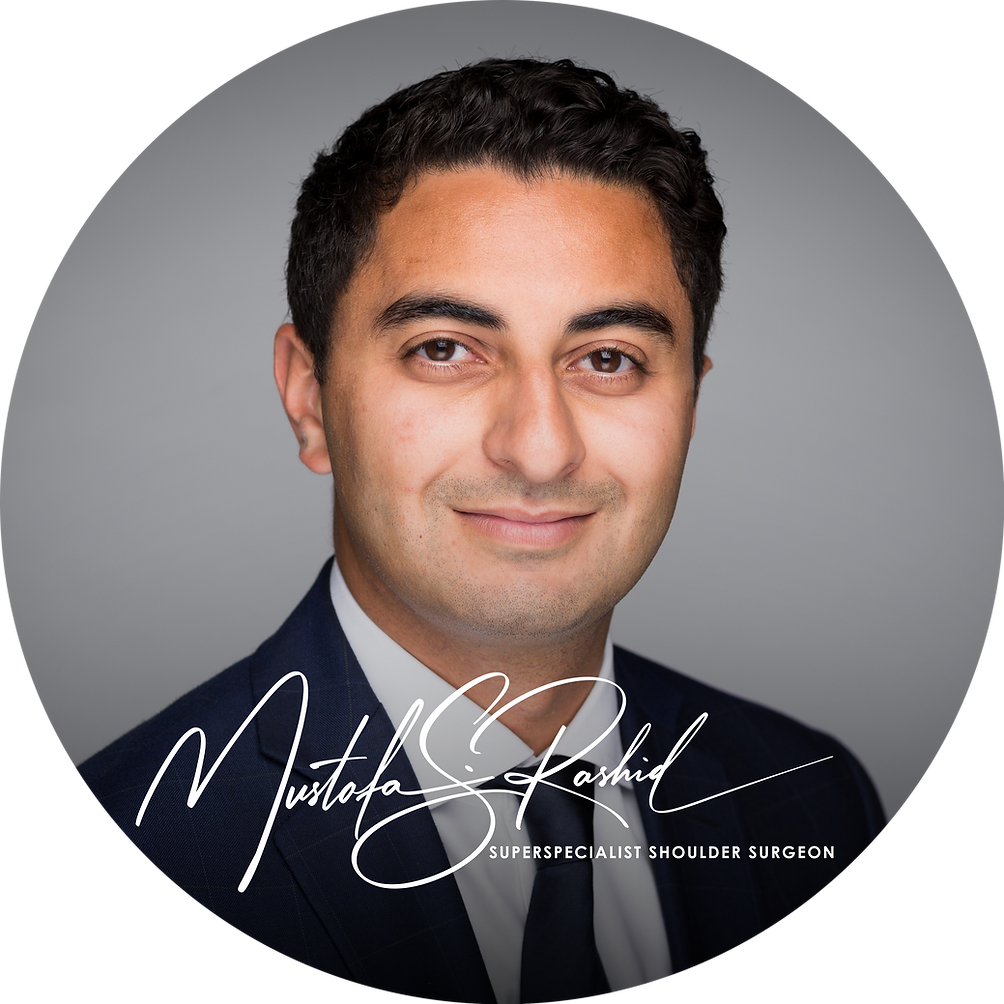Bone Graft Technique (inc. Latarjet procedure) for Shoulder Stabilisation Surgery

Overview
In the situation of a recurrently unstable shoulder that has lost more than 20% bone from the socket side of the shoulder, Dr. Rashid performs two different techniques for restoring bone and stabilising the shoulder joint. Both are safe and effective procedures aimed at restoring normal levels of bone on the socket, and repairing the torn labrum (ring of cartilage) to the socket of the shoulder. These procedures can take between 2 and 3 hours, and are often successful at reducing the lifetime risk of further shoulder dislocations, allowing restoration of strength and confidence with activities. They performed under general anaesthesia, often with a nerve block (regional anaesthesia) as an adjunct to provide pain relief in the post-surgery period.
The traditional procedure, called the Latarjet procedure, involves removing a piece of bone near the shoulder and placing it through the muscle at the front, subscapularis, and securing it onto the front of the socket with two screws.
The newer procedure, that Dr. Rashid learnt to perform in North America involves replacing the bone from either a part of your own collarbone, or a donor piece of bone. It is secured with ultra strong sutures and buttons, and is performed all arthroscopically (keyhole).
Indications for Surgery
If you have chosen to undergo surgery to stabilise your shoulder and reduce the risks of future dislocations, Dr. Rashid will assess whether you have lost enough bone from the socket that it needs to be addressed. Everyone is different, but a threshold of 20% bone loss if often used. It may be less in more competitive contact athletes.
Pre-Surgery Tests and Assessment
Before any shoulder stabilisation surgery, a variety of assessments and tests, such as X-rays, and a MRI (with contrast injection) scan or a 3D CT scan are performed to assess the extent of any bone loss from the ball and/or socket of the shoulder.
Latarjet Procedue
If you and Dr. Rashid have chosen to perform a Latarjet procedure, this is done under general anaesthesia.
You will be positioning slightly sat up and an incision at the front of the shoulder is made. The coracoid bone is then removed using a saw and a splint in the muscle (subscapularis) is made. The bone is placed onto the prepared socket surface and secured with two stainless steel screws. The labrum is then repaired using an anchor.
Key hole bone block + labral repair + remplissage procedure
If you and Dr. Rashid have chosen the key hole technique for restoring bone loss, you will be positioned on your side when under general anaesthesia. A camera is inserted and the defect at the ball of the shoulder is filled in using two anchors (remplissage). The socket is then prepared to accept the bone block, which is brought in through an opening at the front of the shoulder and secured using two pairs of ultra strong sutures and buttons. The labrum is also repaired using 3 or 4 anchors.
Risks and Complications
The risks of these surgeries are not common. These include stiffness (most common risk), recurrent dislocations (5% risk), infection, bone not healing (5%), and nerve injury (rare). Occasionally, patients may develop a type of arthritis related to the dislocation events, many years later.
Recovery and Rehabilitation
Compliance to quality physiotherapy is essential for a good outcome. Dr. Rashid will work with your physiotherapist to outline a protocol for rehab. This will be based in phases and designed to allow you full return to all activities. Rehab for this surgery involves working on range of motion, positioning of the shoulder blades, and addressing any deficiencies in muscle imbalances, including in your core and lower limbs. A CT scan will be performed at 4 months to assess bone graft healing.
Expected Outcomes
After a period of rehabilitation, guided by a physiotherapist, working closely with Dr. Rashid, most patients are able to return to full sports participation and confidence. This often takes between 3-9 months after surgery. Overall, most patients are satisfied with their surgical outcome and are able to return to full sporting participation. It may take some time to regain confidence on the pitch, and Dr. Rashid’s team is here to help you along the way.
About the Author

Mustafa Rashid
Dr. Mustafa Rashid is an award-winning, well published superspecialised surgeon from the UK, specialising in shoulders
